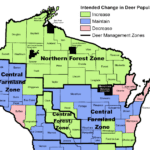Do you have a backyard that always seems to be muddy? Maybe it’s because of the rain or maybe your pets love digging up the yard. Whatever the reason, having a muddy backyard can be frustrating and messy. But don’t worry! There are solutions to help make your backyard mud-free.
One solution is adding mulch or wood chips to areas where there is excess mud. This not only helps absorb moisture, but also provides an attractive look for your yard. Another solution is creating drainage paths by digging trenches in strategic locations throughout the yard. These trenches will help redirect water away from problem areas and into designated drainage spots. With these simple solutions, you can say goodbye to muddy feet and hello to a clean, enjoyable backyard space!
Identifying The Causes Of A Muddy Backyard
Is your backyard always muddy after the rain? Do you find yourself tiptoeing around puddles and mud patches just to get from one place to another? If so, you’re not alone! Many homeowners struggle with a muddy yard, but there are solutions.
One of the first steps in solving any problem is identifying its root cause. In this case, a few common culprits could be contributing to your muddy yard. Poor drainage is often at fault–if water isn’t able to properly drain away from your property, it can pool up and create soggy soil that’s prone to erosion. Another issue could be compacted dirt; when soil becomes too densely packed, it doesn’t absorb water as well, which leads to standing water on the surface.
Luckily, there are some preventive measures you can take to address these issues before they become bigger problems. For example, consider adding landscaping features like berms or raised beds, which help redirect runoff and prevent pooling. Additionally, aerating your lawn regularly can combat compaction by loosening up soil and allowing for better absorption of both nutrients and water. By taking these steps early on, you may be able to avoid more costly fixes down the line.
Assessing Your Yard’s Drainage System
To properly address any issues with a muddy backyard, it is important to assess your yard’s drainage system. The first step in this process is assessing the slope of your lawn. If your yard slopes towards your home, water will naturally flow towards your foundation and cause damage over time. On the other hand, if your yard slopes away from your home, excess water will be directed away from your house.
Another factor to consider when evaluating your yard’s drainage system is soil composition. Certain types of soil absorb water better than others. For example, sandy soil allows for better drainage than clay soil, which can become compacted and prevent proper water absorption. By checking the type of soil in your yard, you can determine how well or poorly it drains.
Assessing slope and checking soil composition are crucial steps in addressing any problems with a muddy backyard caused by poor drainage. By understanding these factors and making necessary adjustments, you can help ensure that excess water is being appropriately drained away from your property. In order to further improve the effectiveness of your drainage system, clearing debris and obstructions should also be considered.
Clearing Debris And Obstructions
Are you tired of looking at your messy, cluttered yard? Debris and obstructions can make it difficult to enjoy the outdoors. But don’t worry, there are solutions! You can tackle this problem with DIY landscaping or by hiring professional services.
If you’re up for the challenge, clearing debris and obstructions yourself can save you money. Start by removing any large items like fallen trees or old furniture. Then rake up leaves and small sticks that have accumulated over time. Make sure to dispose of all waste properly.
However, if you don’t have the time or energy to do it yourself, consider hiring a professional service. They will have the proper equipment to clear larger obstacles and ensure that everything is disposed of safely. No matter which option you choose, clearing debris and obstructions in your backyard will create a more enjoyable space for outdoor activities.
Now that your backyard is cleared, why not take it one step further by creating a grading plan? This plan involves leveling out uneven ground to prevent water buildup and improve drainage. Stay tuned for our next section on how to create a grading plan for your yard!
Creating A Grading Plan For Your Yard
After clearing debris and obstructions from your backyard, the next step is to design slopes that will help with drainage solutions. This means making sure that water flows away from your home’s foundation and toward an appropriate outlet. You’ll need to create a grading plan for your yard that takes into account the natural slope of the land, as well as any man-made structures like patios or retaining walls.
When designing slopes, it’s important to consider how much water you’re dealing with. If you live in an area with heavy rainfall or frequent storms, you may need more aggressive slope designs than if you live in a dry climate. Additionally, some soil types are better suited to drainage than others, so be sure to consult with a professional if you’re not sure what type of soil you have.
Drainage solutions can take many forms depending on your specific needs. Some common options include installing French drains (a system of underground pipes designed to channel water away from your house), creating swales (shallow ditches that collect water and direct it where you want it), or building rain gardens (landscaped areas designed to capture and absorb rainwater). By incorporating these features into your backyard design, you can ensure that excess water is safely directed away from your home and landscaping.
- A soggy backyard can lead to mold growth inside your home
- Poorly drained yards attract mosquitoes and other pests
- Proper drainage can prevent erosion and protect nearby bodies of water
Now that we’ve discussed designing slopes and drainage solutions for your backyard, let’s move onto installing French drains – one popular method for managing excess groundwater.
Installing French Drains
Installing French Drains can be a cost-effective solution to deal with water accumulation in your backyard. While some homeowners might opt for professional installation, others may choose to install the drains themselves as a DIY project. Cost considerations are an important factor when deciding whether to hire a professional or do it yourself.
Professional installation of French Drains can range from $1,500-$5,000. This price includes materials and labor costs associated with digging trenches, installing pipes, creating slope gradients, backfilling soil, and adding gravel. However, if you choose to install the drain system on your own using PVC piping instead of corrugated plastic tubing, you could potentially save hundreds of dollars.
DIY vs Professional installation is ultimately up to the homeowner’s level of comfort with tools and manual labor. If you’re confident in your abilities and don’t mind getting dirty, then installing French Drains yourself could be a fun weekend project that saves money. On the other hand, if you’re not familiar with plumbing basics or don’t have access to landscaping equipment like trenchers and excavators, hiring a professional might be worth the extra expense.
| Pros | Cons |
|---|---|
| Less expensive | Time-consuming |
| Customizable design | Requires manual labor |
| Can complete at own pace | Risk for mistakes |
Using rain barrels to collect excess water is another way homeowners can reduce standing water in their yard.
Using Rain Barrels To Collect Excess Water
Now that you have installed French drains in your backyard, it’s time to think about what to do with the excess water. One way to collect and use rainwater is by using rain barrels. These barrels are easy to install and can be a great solution for muddy backyards.
DIY rain barrel installation is a simple process that anyone can do on their own. First, find a suitable location where there is enough space for the barrel and make sure it’s close enough to your downspout so that it catches all of the runoff from your roof. Then, attach the spigot at the bottom of the barrel and connect it to a hose or watering can for easy access.
Rain barrel maintenance is also an important part of keeping your yard dry and mud-free. Make sure to clean out any debris from inside the barrel regularly and cover it when not in use to prevent mosquitoes from breeding. By following these steps, you’ll have a reliable source of water for gardening or other outdoor activities while helping reduce runoff into nearby streams or lakes.
To further improve drainage in your backyard, consider adding permeable pavers or stones. These materials allow water to flow through them instead of pooling on top, reducing erosion and eliminating standing water. With proper planning and implementation, you can create a beautiful landscape that both looks great and helps manage excessive moisture levels during rainy weather!
Adding Permeable Pavers Or Stones
Now that we have a clear understanding of the importance of drainage in our backyard, let’s dive into adding permeable pavers or stones. Choosing materials for this project can be overwhelming, but it ultimately comes down to personal preference and budget. Some popular options include concrete pavers, natural stone, and gravel.
If you’re up for a DIY installation, here are some tips to keep in mind. First, make sure to properly prepare the area by removing any existing vegetation and debris. Next, level out the ground as much as possible before laying down your chosen material. Finally, add a layer of sand underneath your pavers or stones to encourage proper drainage.
Adding permeable pavers or stones is an effective way to combat a muddy backyard while also adding aesthetic appeal. However, it’s important to remember that these materials alone may not completely solve your drainage issues. In our next section, we’ll discuss how planting ground cover or grasses can work hand-in-hand with permeable surfaces to create a more sustainable solution for your backyard.
Planting Ground Cover Or Grasses
- Ground covers are plants that grow close to the ground and spread out.
- They can be grasses, shrubs, or flowers.
- They benefit your yard by helping to keep the soil from eroding and keeping weeds away.
- Planting ground cover is easy. Just dig a hole, put the plant in and cover it with dirt.
- Water it regularly and it should grow quickly.
- Ground cover is a great way to help muddy backyards, because they keep the dirt in place and make it look nice!
Types Of Ground Cover
When looking for a solution to a muddy backyard, planting ground cover or grasses is an excellent option. However, choosing the best type of ground cover can be tricky. There are several benefits and drawbacks to different options, so it’s important to consider your specific needs.
One popular choice for ground cover is clover. Clover offers many benefits such as being low maintenance and drought-resistant, making it perfect for those who want something easy to care for. Additionally, clover attracts bees which helps pollinate other plants in your garden. The only drawback with clover is that it may not grow well in shady areas.
Another great option is moss. Moss grows almost anywhere, even on rocks or trees! It also has a unique look that adds character to any yard. On the downside, moss requires a lot of water and doesn’t handle heavy foot traffic well.
If you’re looking for something that handles high-traffic areas better than moss, then grass might be the way to go. While grass does need more upkeep compared to some other options like clover or moss, there are several types available depending on your individual needs such as weather resistance or shade tolerance. Ultimately, taking into account factors such as sunlight exposure and how much foot traffic your yard receives will help determine what type of ground cover works best for you!
Benefits Of Ground Cover
Now that we’ve discussed some types of ground cover, let’s talk about the benefits of using ground cover in your backyard. One of the biggest advantages is that it helps prevent erosion by holding soil in place and reducing water runoff. This means you’ll have less mud and dirt to deal with after a rainstorm! Additionally, ground covers can improve soil health by adding nutrients back into the earth as they decompose.
Another benefit of using ground cover is that it can help reduce weed growth. When there are fewer areas for weeds to grow, you won’t need to spend as much time pulling them out or using harmful chemicals to get rid of them. Plus, having more plants in your yard can attract beneficial insects like bees and butterflies which can help pollinate other plants in your garden.
There are many different types of ground cover available depending on what you’re looking for. Some popular options include clover, moss, and grasses like fescue or bluegrass. No matter which type you choose, remember that planting ground cover is an eco-friendly way to add beauty and functionality to your outdoor space!
Planting Ground Cover
Now that we know the benefits of ground cover, let’s talk about how to plant it. Planting ground cover is a great way to add beauty and functionality to your yard while also being eco-friendly. First, you’ll need to decide which type of ground cover you want to use. There are many options available depending on your preferences.
When planting ground cover, it’s important to prepare the area properly. Start by removing any weeds or other plants from the space where you plan to plant. Then, loosen up the soil and mix in some compost or fertilizer to provide nutrients for your new plants. Finally, lay down your ground cover and water thoroughly.
Regular maintenance is necessary when taking care of your newly planted ground cover. Make sure to water as needed and frequently check for weed growth so you can remove them before they take over. With proper care, your ground cover will thrive and provide numerous benefits for both you and the environment!
Installing A Rain Garden
Rain gardens are a great solution for muddy backyards. They help to capture and absorb rainwater, which can reduce the amount of runoff that ends up in storm drains or nearby bodies of water.
One of the benefits of installing a rain garden is that they can be designed as a DIY project. With some planning and research, you can create an attractive and functional rain garden in your backyard. Some things to consider when designing your rain garden include location, size, soil type, and plant selection.
Overall, incorporating a rain garden into your yard’s drainage system can have many benefits. Not only does it help with reducing erosion and flooding, but it also provides habitat for beneficial insects and wildlife. Plus, having a beautiful rain garden in your backyard is a great way to showcase your commitment to sustainability and environmental stewardship.
Maintaining Your Yard’s Drainage System
Now that you have installed a rain garden, it’s important to maintain your yard’s drainage system. This will ensure that the water flows smoothly and effectively through your property without causing any damage or flooding.
One way to prevent soil erosion in your backyard is by planting vegetation. Trees, shrubs, and other plants help hold the soil together with their roots, preventing it from washing away during heavy rainfall or strong winds. You can also add mulch to your garden beds to further protect against erosion.
Water conservation techniques are also vital when maintaining your yard’s drainage system. One simple method is to collect rainwater using barrels or cisterns, which can then be used for watering plants and gardens instead of relying on municipal water sources. Additionally, reducing the amount of paved surfaces in your yard allows more water to seep into the ground rather than running off into storm drains.
- List of 4 items:
- Don’t let excess runoff go down the drain! Redirect it towards thirsty plantings.
- Create a small wetland area in your backyard where excess water can accumulate naturally.
- Consider installing permeable pavers for pathways and patios.
- Use native plants in your landscaping as they require less maintenance and water than non-native species.
By implementing these soil erosion prevention methods and water conservation techniques, you can keep your backyard healthy while protecting the environment. Remember to regularly check on and maintain your drainage system so that it remains effective year-round.
Frequently Asked Questions
Are There Any Natural Solutions To Prevent A Muddy Backyard?
If you want to help the environment and prevent water waste, rain barrels are a great solution. They collect rainwater that you can use for watering plants instead of using tap water. Composting toilets are also eco-friendly because they turn human waste into fertilizer for your garden. However, if you’re looking for natural solutions to prevent a muddy backyard, there are other options such as adding mulch or gravel to high traffic areas or planting ground cover like clover which helps absorb moisture.
How Can I Tell If My Backyard’s Drainage System Is Working Properly?
If you want to make sure that your backyard is not getting too muddy, it’s important to check the drainage system. You can do this by looking for any standing water or soggy areas after a rainstorm, and also by checking the slope of your yard. If you’re not sure how to assess your drainage system properly, it might be best to get a professional assessment from someone who knows what they are doing. This way, you will know if there are any issues with your yard’s drainage and how to fix them.
Can I Use Regular Rocks Instead Of Permeable Pavers Or Stones?
If you want to make your backyard look better, but don’t have a lot of money, there are some rock alternatives that can be budget friendly options. Regular rocks may work instead of permeable pavers or stones, but it’s important to find a balance between permeability and aesthetics. You want the water to drain properly so you don’t end up with a muddy mess in your yard, but you also want it to look nice. It might be helpful to talk to someone who knows about landscaping to get ideas for what will work best in your backyard.
What Types Of Plants Are Best For A Rain Garden?
To design a rain garden, it’s important to choose the right plants. Native plants are best because they’re used to the local climate and soil conditions. Some good options include Joe Pye weed, black-eyed Susans, and milkweed. These plants have deep roots that help absorb water and prevent erosion. Plus, they attract beneficial insects like bees and butterflies! When planning your rain garden, be sure to think about the size of each plant so they don’t overcrowd each other. With these tips in mind, you’ll create a beautiful and functional addition to your backyard!
How Often Should I Maintain My Yard’s Drainage System?
When it comes to taking care of your yard’s drainage system, it’s important to make sure you are keeping up with regular maintenance. How often you should maintain your drainage system depends on factors like climate and the amount of rainfall in your area. Doing DIY checks can help catch any potential problems early on, but getting a professional inspection is also an option. In terms of cost-effective solutions, preventative maintenance can save you money in the long run by avoiding costly repairs or replacements later on.
Conclusion
So there you have it, folks! If you’re tired of dealing with a muddy backyard every time it rains, there are natural solutions that can help. Check your yard’s drainage system to make sure it’s working properly and consider adding permeable pavers or stones to prevent water from pooling in certain areas.
Don’t forget about the power of plants either – creating a rain garden filled with native species can not only improve drainage but also attract beneficial wildlife to your yard. Just remember to keep up with regular maintenance to ensure everything continues to work smoothly. With these tips, you’ll be on your way to a more enjoyable outdoor space in no time!







